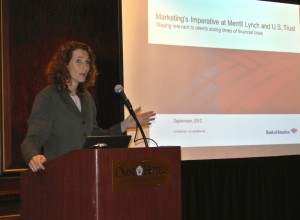Marketing tips from referral expert Steve Wershing
These lines in Stephen Wershing’s Stop Asking for Referrals caught my eye.
I have looked at hundreds of advisor websites, and many of them don’t just say the same thing — they use the same words. Make sure that your marketing communicates what’s different about your clients and what’s unique about what you do for them.
I agree with Wershing about these weaknesses, and I was happy that his book offered advice about how you can differentiate your marketing materials.
Some of Wershing’s tips resonated strongly with me. I discuss them below.
1. Define your target audience narrowly
Focus on a problem that you solve for a narrowly defined group of people, so it’s easy for people to recognize your ideal clients. This focus will differentiate from other advisors and make you easy to refer.
2. Focus on benefits
Failure to focus on benefits is a common flaw in the articles and white papers I edit for investment and wealth management firms, so I’m glad Wershing discusses this. I like his before-and-after examples of elevator speeches. Here’s an example.
Before: We do financial planning for the suddenly single.
After: When people come into money, it is easy for them to lose their values and make bad decisions. I show them how to avoid those pitfalls.
3. Ask for introductions or advice
Ask clients for introductions or advice instead of referrals, says Wershing. This puts less stress on clients than referrals so it’s more likely to be productive. To boost your introduction request’s effectiveness, do research to identify people who fall within your target audience. LinkedIn makes this easier than in the days prior to social media.
On the advice front, consider trying the following question posed by Wershing: “If you were in my position, trying to do what I am trying to accomplish, what would you do?”
Wershing’s suggestions about introductions and advice remind me about the power of informational interviewing, which has been essential to my career development.
In an email exchange with me, Wershing said, “The most exciting thing I have discovered in working with advisors on these strategies is the techniques that will attract more referrals also end up providing the client better, more expert advice. Advisors can improve the industry while growing more successful. I cannot imagine a better outcome.” I agree.
Your suggestions?
If you’ve tried the techniques discussed above, I’d enjoy hearing from you. Please add your voice to the conversation.
Disclosure: I received a free copy of this book from McGraw-Hill in return for agreeing to write about it.


